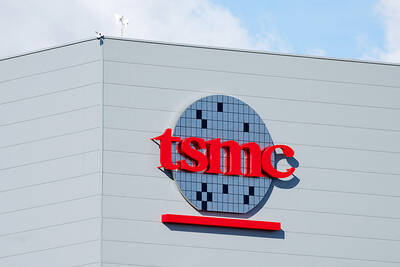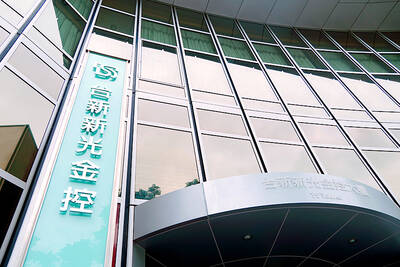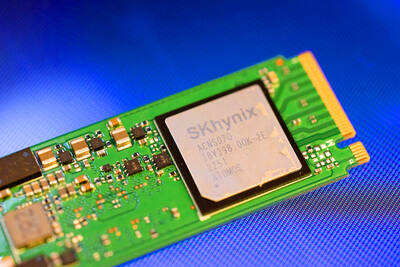The government yesterday cut feed-in tariffs for renewable energy installations by less than initially planned to speed up the nation’s “green” energy goals.
The feed-in tariff would be reduced to NT$5.8744 per unit for rooftop solar panel systems during the first half of next year, about 9 percent higher than the tariff of NT$5.3848 per unit proposed in September, the Ministry of Economic Affairs said in a statement.
The government “decided to raise feed-in tariffs for rooftop solar panel systems with a capacity below 20 megawatts to accelerate renewable energy installations,” it said.
The tariff for this type of rooftop solar panel system would drop to NT$5.7493 in the second half of next year, the ministry’s statistics showed.
This type of rooftop system is the most popular among installation applicants, the ministry said.
The new tariff for the second half of next year would represent a less drastic decline of 5.8 percent annually from NT$6.1033 for the second half of this year. If the tariff was based on the September proposal of NT$5.3848, the decline would have been 13.45 percent annually.
The feed-in tariffs for rooftop solar panel systems with different capacities, ground-mount solar panel systems and floating solar power systems would fall by between 3.79 and 5.8 percent year-on-year to between NT$4.2429 and NT$4.6901 per unit, the ministry said.
Those participating in the government’s “green” rooftop program, would get NT$6.4 per unit in feed-in tariffs if they adopt solar panels with a high conversion efficiency, the ministry said.
The feed-in tariff for offshore wind turbine installations would reach NT$5.8498 per unit over a 20 year period, 0.61 percent higher than the NT$5.8141 proposed three months ago, because of higher installation costs and extra subsidies for fishermen affected by the wind farms, the ministry said.
The new tariff means a decline of about 3.21 percent from last year’s NT$6.0437 per unit, it said.
To accelerate geothermal energy system installations, the ministry has increased the feed-in tariff to NT$6.1710 from the proposed NT$5.6447 for the first 10 years of the installations’ subsidiary period, it said, adding that the new tariff aims to help operators reduce their initial risk.
The tariff would drop to NT$3.5685 per unit for the remaining 10 years of the 20 year subsidiary period, lower than the NT$4.4465 per unit previously proposed, it said.
Meanwhile, the NT$8.3 billion “green” bonds issued by state-run Taiwan Power Co (Taipower, 台電) were listed on the nation’s over-the-counter bourse yesterday, marking the largest “green” debt issue by a local firm this year, Taipei Exchange (TPEX) said.
The debt, consisting of NT$5.6 billion seven-year bonds and NT$2.7 billion 10-year bonds, is to fund the nation’s renewable energy projects that focus on developing wind and solar power, Taipower said.
“Green” bonds traded on TPEX have reached more than NT$20 billion so far this year and the scale is expected to grow further next year, TPEX chairman Philip Chen (陳永誠) said.
Additional reporting by Kuo Chia-erh

Taiwan Semiconductor Manufacturing Co (TSMC, 台積電) secured a record 70.2 percent share of the global foundry business in the second quarter, up from 67.6 percent the previous quarter, and continued widening its lead over second-placed Samsung Electronics Co, TrendForce Corp (集邦科技) said on Monday. TSMC posted US$30.24 billion in sales in the April-to-June period, up 18.5 percent from the previous quarter, driven by major smartphone customers entering their ramp-up cycle and robust demand for artificial intelligence chips, laptops and PCs, which boosted wafer shipments and average selling prices, TrendForce said in a report. Samsung’s sales also grew in the second quarter, up

On Tuesday, US President Donald Trump weighed in on a pressing national issue: The rebranding of a restaurant chain. Last week, Cracker Barrel, a Tennessee company whose nationwide locations lean heavily on a cozy, old-timey aesthetic — “rocking chairs on the porch, a warm fire in the hearth, peg games on the table” — announced it was updating its logo. Uncle Herschel, the man who once appeared next to the letters with a barrel, was gone. It sparked ire on the right, with Donald Trump Jr leading a charge against the rebranding: “WTF is wrong with Cracker Barrel?!” Later, Trump Sr weighed

HEADWINDS: Upfront investment is unavoidable in the merger, but cost savings would materialize over time, TS Financial Holding Co president Welch Lin said TS Financial Holding Co (台新新光金控) said it would take about two years before the benefits of its merger with Shin Kong Financial Holding Co (新光金控) become evident, as the group prioritizes the consolidation of its major subsidiaries. “The group’s priority is to complete the consolidation of different subsidiaries,” Welch Lin (林維俊), president of the nation’s fourth-largest financial conglomerate by assets, told reporters during its first earnings briefing since the merger took effect on July 24. The asset management units are scheduled to merge in November, followed by life insurance in January next year and securities operations in April, Lin said. Banking integration,

LOOPHOLES: The move is to end a break that was aiding foreign producers without any similar benefit for US manufacturers, the US Department of Commerce said US President Donald Trump’s administration would make it harder for Samsung Electronics Co and SK Hynix Inc to ship critical equipment to their chipmaking operations in China, dealing a potential blow to the companies’ production in the world’s largest semiconductor market. The US Department of Commerce in a notice published on Friday said that it was revoking waivers for Samsung and SK Hynix to use US technologies in their Chinese operations. The companies had been operating in China under regulations that allow them to import chipmaking equipment without applying for a new license each time. The move would revise what is known